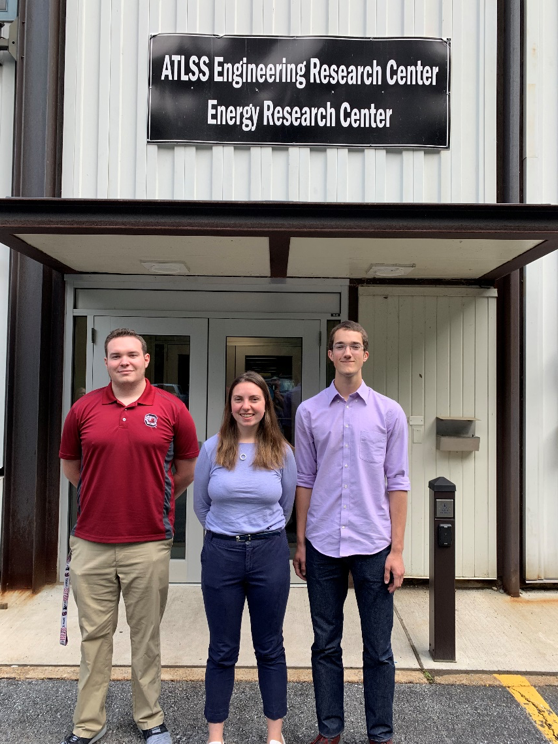2019 NHERI REU Students at Lehigh University
Published on June 28, 2019

From left: Mitchell Stiles, Cecilia Maginot, and Tony Clay
NHERI Lehigh is hosting three students this summer as part of NSFs Research Experience for Undergraduates (REU) program, which promotes education and research through internships in active research. These students arrived in Bethlehem, Pennsylvania on May 29, kicking off a 10-week program that is centered around NHERI research projects active at NHERI Lehigh, but also includes professional development workshops, K-12 outreach activities and tours of Pennsylvania industry partners. Their respective research findings will be presented August 1 and 2 at the University of Texas, Austin, along with REU students from the other NHERI sites.
Cecelia Maginot is an undergraduate at Purdue University. She will be a junior in the fall, majoring in civil engineering with a concentration in environmental engineering and minors in classical studies and environmental politics and policy. She is deciding between graduate school and law school, but she will likely first to go into industry to better understand where her passions lie. She is interested in sustainable design and how to create a better world for future generations. At ATLSS, she works as part of a team that is experimentally investigating the behavior of seismic collectors in steel building structures.
Mitchell Stiles, an undergraduate at the University of South Carolina, is a senior in mechanical engineering with a minor in nuclear engineering. He is considering graduate school, but he may first go into the nuclear engineering field to understand the importance of the nuclear industry and what it has to offer. He is interested in broad aspects of the nuclear field including research or helping to manufacture the next generation nuclear plants for the United States. At the ATLSS Engineering Research Center at Lehigh University, he is working on a semi-active damper to further improve the ability to mitigate harmonic excitations from multi-hazard events. The semi-active aspect of the project involves the ability to have adjustable actuation to different sized excitations, so that a device isnt limited to a certain resonance.
Tony Clay, an undergraduate at the University of Idaho, will start his third year this fall studying civil engineering. He loves math and seeing its practical applications in the field of structural engineering. He finds it especially cool that sometimes the aspects of engineering that are the most interesting mathematically are also important to saving lives from natural hazards. He is collaborating on a project at ATLSS to experimentally test the seismic behavior of cross-laminated-timber walls, which could be important in the future of sustainable tall buildings.







